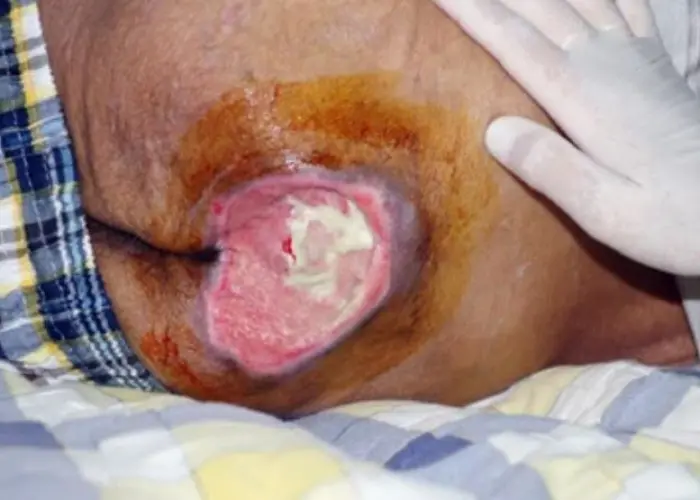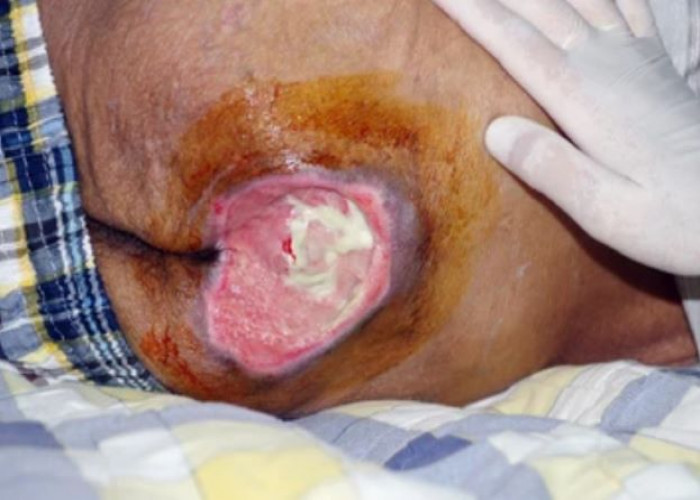 Welcome
Welcome
“May all be happy, may all be healed, may all be at peace and may no one ever suffer."
Bedsores (pressure ulcers)

Bedsores, also known as pressure ulcers, are injuries to the skin and underlying tissue that occur as a result of prolonged pressure or friction. They most commonly occur in areas of the body where the bone is close to the skin, such as the hips, heels, and elbows. Bedridden or wheelchair-bound individuals are at increased risk for developing bedsores. Treatment may include relieving pressure on the affected area, keeping the wound clean and moist, and applying dressings or topical medication to promote healing. In severe cases, surgery may be required. Preventative measures, such as frequent repositioning, proper nutrition, and maintaining good hygiene, can help reduce the risk of developing bedsores.
Research Papers
Disease Signs and Symptoms
- Redness or changes in skin color
- Swollen skin
Disease Causes
Bedsores (pressure ulcers)
Bedsores are caused by pressure against the skin that limits blood flow to the skin. Limited movement can make skin vulnerable to damage and lead to development of bedsores.
Three primary contributing factors for bedsores are:
- Pressure. Constant pressure on any part of your body can lessen the blood flow to tissues. Blood flow is essential for delivering oxygen and other nutrients to tissues. Without these essential nutrients, skin and nearby tissues are damaged and might eventually die.
- For people with limited mobility, this kind of pressure tends to happen in areas that aren't well padded with muscle or fat and that lie over a bone, such as the spine, tailbone, shoulder blades, hips, heels and elbows.
- Friction. Friction occurs when the skin rubs against clothing or bedding. It can make fragile skin more vulnerable to injury, especially if the skin is also moist.
- Shear. Shear occurs when two surfaces move in the opposite direction. For example, when a bed is elevated at the head, you can slide down in bed. As the tailbone moves down, the skin over the bone might stay in place — essentially pulling in the opposite direction.
Disease Prevents
Bedsores (pressure ulcers)
You can help prevent bedsores by frequently repositioning yourself to avoid stress on the skin. Other strategies include taking good care of your skin, maintaining good nutrition and fluid intake, quitting smoking, managing stress, and exercising daily.
Tips for repositioning
Consider the following recommendations related to repositioning in a bed or chair:
- Shift your weight frequently. Ask for help with repositioning about once an hour.
- Lift yourself, if possible. If you have enough upper body strength, do wheelchair pushups — raising your body off the seat by pushing on the arms of the chair.
- Look into a specialty wheelchair. Some wheelchairs allow you to tilt them, which can relieve pressure.
- Select cushions or a mattress that relieves pressure. Use cushions or a special mattress to relieve pressure and help ensure that your body is well positioned. Do not use doughnut cushions, as they can focus pressure on surrounding tissue.
- Adjust the elevation of your bed. If your bed can be elevated at the head, raise it no more than 30 degrees. This helps prevent shearing.
Disease Treatments
Treating pressure ulcers involves reducing pressure on the affected skin, caring for wounds, controlling pain, preventing infection and maintaining good nutrition.
Treatment team
Members of your care team might include:
- A primary care physician who oversees the treatment plan
- A physician or nurse specializing in wound care
- Nurses or medical assistants who provide both care and education for managing wounds
- A social worker who helps you or your family access resources and who addresses emotional concerns related to long-term recovery
- A physical therapist who helps with improving mobility
- An occupational therapist who helps to ensure appropriate seating surfaces
- A dietitian who monitors your nutritional needs and recommends a good diet
- A doctor who specializes in conditions of the skin (dermatologist)
- A neurosurgeon, vascular surgeon, orthopedic surgeon or plastic surgeon
Reducing pressure
The first step in treating a bedsore is reducing the pressure and friction that caused it. Strategies include:
- Repositioning. If you have a bedsore, turn and change your position often. How often you reposition depends on your condition and the quality of the surface you are on.
- Using support surfaces. Use a mattress, bed and special cushions that help you sit or lie in a way that protects vulnerable skin.
Cleaning and dressing wounds
Care for pressure ulcers depends on how deep the wound is. Generally, cleaning and dressing a wound includes the following:
- Cleaning. If the affected skin isn't broken, wash it with a gentle cleanser and pat dry. Clean open sores with water or a saltwater (saline) solution each time the dressing is changed.
- Putting on a bandage. A bandage speeds healing by keeping the wound moist. It also creates a barrier against infection and keeps skin around it dry. Bandage choices include films, gauzes, gels, foams and treated coverings. You might need a combination of dressings.
Removing damaged tissue
To heal properly, wounds need to be free of damaged, dead or infected tissue. The doctor or nurse may remove damaged tissue (debride) by gently flushing the wound with water or cutting out damaged tissue.
Other interventions
Other interventions include:
- Drugs to control pain. Nonsteroidal anti-inflammatory drugs — such as ibuprofen (Advil, Motrin IB, others) and naproxen sodium (Aleve) — might reduce pain. These can be very helpful before or after repositioning and wound care. Topical pain medications also can be helpful during wound care.
- A healthy diet. Good nutrition promotes wound healing.
Surgery
A large bedsore that fails to heal might require surgery. One method of surgical repair is to use a pad of your muscle, skin or other tissue to cover the wound and cushion the affected bone (flap surgery).
Disease Diagnoses
Disease Allopathic Generics
Disease Ayurvedic Generics
Disease Homeopathic Generics
Disease yoga
Bedsores (pressure ulcers) and Learn More about Diseases

Anal cancer

Clubfoot

Diabetic ketoacidosis (DKA)

Hodgkin's lymphoma (Hodgkin's disease)

Thoracic outlet syndrome

Scabies

Phenylketonuria (PKU)

Parkinson's disease
Bedsores, Bed sores, Pressure ulcers, Decub ulcers, বেডসোর, প্রেশার আলসার
To be happy, beautiful, healthy, wealthy, hale and long-lived stay with DM3S.
